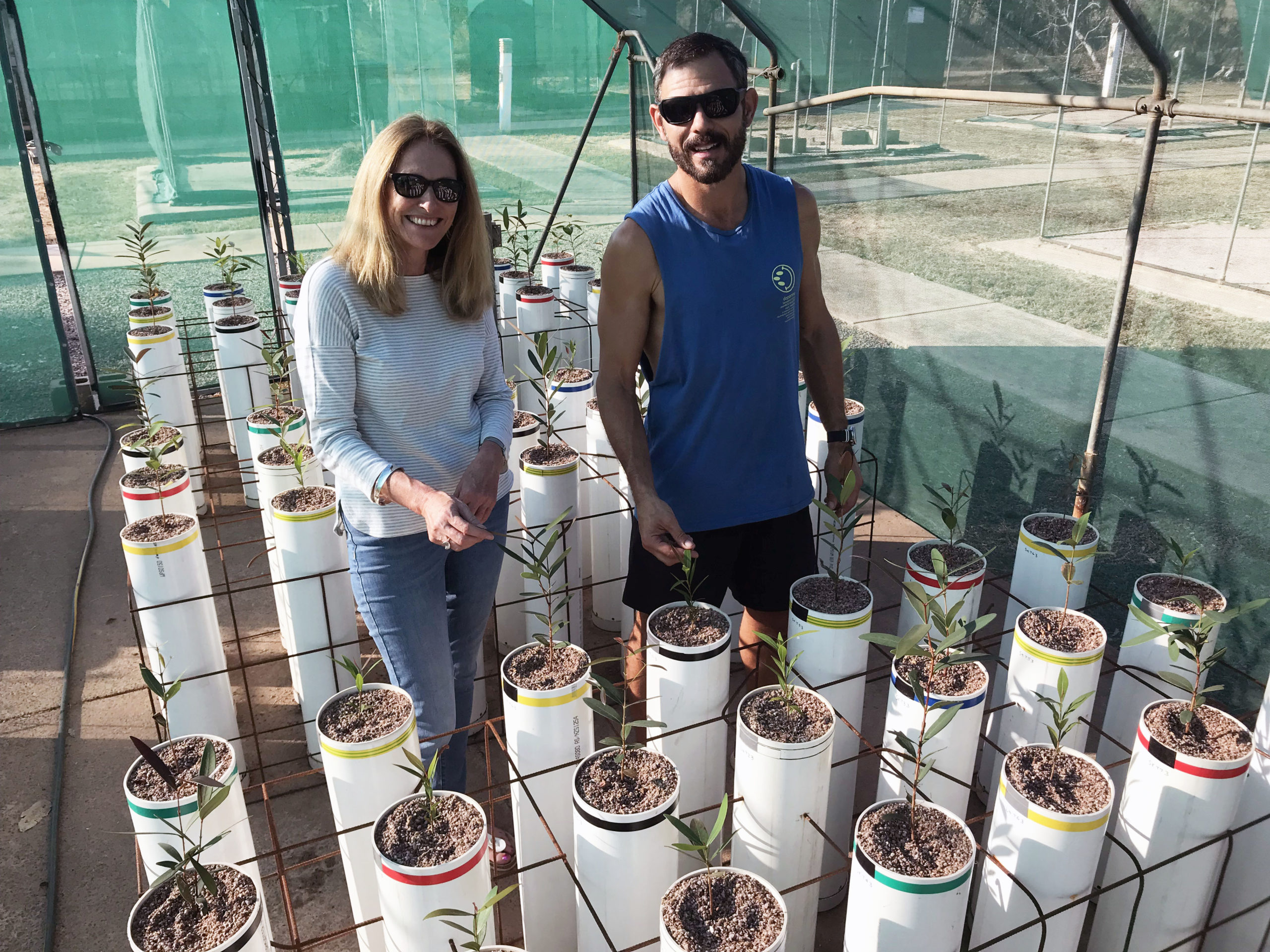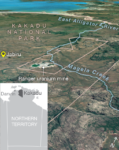18 May 2020
How sensitive are riparian trees to contaminated mine water?

Associate Professor Sam Setterfield (UWA) and Adam Bourke (CDU) in the greenhouse at CDU, photo Lindsay Hutley.
Magela Creek, in Kakadu National Park, flows through the Ranger uranium mine lease. Leaching of magnesium sulfate (MgSO4) into the creek from the rehabilitated mine site is a significant concern for the long-term health of riparian vegetation. Hub research has found that elevated concentrations of MgSO4 have little to no impact on three of the four common tree species tested for MgSO4 toxicity in glasshouse trials.
Only Alphitonia excelsa (red ash) showed reduced growth at high MgSO4 concentrations. Further experiments on red ash, along with two additional riverbank species important to Kakadu’s Traditional Owners (freshwater mangrove and river pandanus) are now underway.
The research, led by Associate Professor Samantha Setterfield of the University of Western Australia and Professor Lindsay Hutley of Charles Darwin University in collaboration with the Australian Government’s Supervising Scientist Branch, is also investigating the dependence of riparian vegetation on groundwater, which is the source of water most likely to be affected by the leaching of MgSO4 from waste rock. Read more in the project update.

Magela Creek flows through the Ranger uranium mine lease and into surrounding Kakadu National Park.
Want to know more about the Resilient Landscapes Hub's activities and our research into practical solutions to environmental problems? Stay informed about activities, research, publications, events and more through the Hub newsletter.